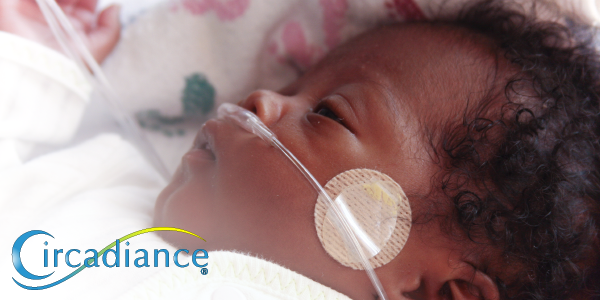This blog is largely excerpted from an article featured in the 2019 winter issue of neonatal INTENSIVE CARE magazine.
Infant Monitoring in the Hospital and Home provides clinical value to healthcare providers. Monitoring enables the diagnosis and management of at-risk vulnerable infants to provide better outcomes. Monitoring also improves the quality of life for a pre-term infant by enabling the baby to go home earlier, and peace of mind for their family, knowing that their baby will not suffer from undetected life threatening events while lowering the cost of care by providing a low cost alternative to hospital care, enabling earlier NICU discharge.
All premature infants are at risk for apnea of prematurity. Closely associated with apnea of prematurity is periodic breathing. Periodic breathing (PB) is defined as a series of three or more respiratory pauses lasting 3 seconds or longer separated by 20 seconds or more of normal breathing. There are published norms for percentage of periodic breathing, but more importantly are the consequences, such as hypoxia. Apnea of prematurity can lead to death or permanent impairment of mental, psycho-motor and functional development as well as cerebral palsy or blindness. Infants in whom apnea exceeded 20 seconds have an increased incidence of intraventricular hemorrhage, hydrocephalus, prolonged mechanical ventilation, and abnormal neurologic development after their first year of life. Infants with clinically significant apnea of prematurity do not perform as well as prematurely born infants without recurrent apneas during neurodevelopmental follow-up testing. The longer the occurrence of apnea of prematurity, the greater the neurodevelopmental impairment as measured by the Bayley scale for mental development and psycho-motor development or by the occurrence of cerebral palsy or blindness.
Apnea of prematurity is the most common problem in premature neonates. The earlier a baby is born before full term, the higher their likelihood of having apnea of prematurity. Cardiorespiratory monitoring improves bedside detection of apnea of prematurity. Clinicians heavily rely on nursing documentation to make decisions. Yet published findings show that even highly trained observers miss more than 50% of apnea of prematurity episodes. At the same time, standard hospital monitors do not tell the whole story. They make continuous recordings, events are not easy to locate in the records and alarms are often ignored by hospital staff. Apnea, bradycardia, and desaturation events are subjective in nature unless the standard definition is strictly followed. Event recording Cardiorespiratory Monitors allow these standards to be strictly followed and provide alarms when pre-set limits are exceeded.
Precise diagnosis of apnea of prematurity requires multi-channel recordings, which are most commonly measurements of thoracic impedance, heart rate, and O2 saturation. Babies are assessed prior to discharge in NICU or transitional space (step down nursery). Patients in step down units are commonly monitored with a Home Cardiorespiratory Monitor as central Cardiorespiratory Monitors found in the NICU may not be available. Apnea of prematurity may not resolve at term and may persist for some time after hospital discharge. These babies should be considered for home monitoring if apneas or bradycardias persist as discharge date nears.
Without a monitor the caregiver may not recognize when apneas reappear. Home Monitoring enables healthcare providers to manage outpatients with conditions that may affect breathing, Heart Rate or O2 saturation. Event recording monitors enable healthcare providers to manage infants who may have subtle or intermittent problems such as cardiac conditions, seizures, parental neglect or abuse, or the onset of infections. The home care provider should set up monitor in the NICU prior to discharge to enable the family to become familiar with the equipment and the alarms. Parents “room in” with their baby the last night in the hospital.
If used correctly, Home Cardiorespiratory Monitors can save money. Cardiorespiratory monitoring Improves bedside detection and assists in precise diagnosis of apnea of prematurity in the hospital. It enables the potential for earlier hospital discharge of premature infants. Earlier discharge provides better quality of life for the baby and for the family, as well as lowers cost of care and improves profitability for the hospital.
Home Monitor alarms allow the parents to quickly respond in the event a pre-term baby stops breathing or has a bradycardia, and to have better peace of mind as the baby outgrows the need to be monitored. Cardiorespiratory monitoring provides documentation of the condition and management of at-risk infants throughout their hospital stay and subsequent treatment received in the home early in life. Cardiorespiratory monitoring is clinically useful, technologically relevant, and economical.
Next week, we will continue our two-part series on why monitoring is important for patients, parents, and healthcare providers.
Andre A Muelenaer, Jr, MD, MS, FAAP, FCCP (2019). The Clinical Value of Infant Monitoring. neonatal INTENSIVE CARE, Volume 32 No. 1.





